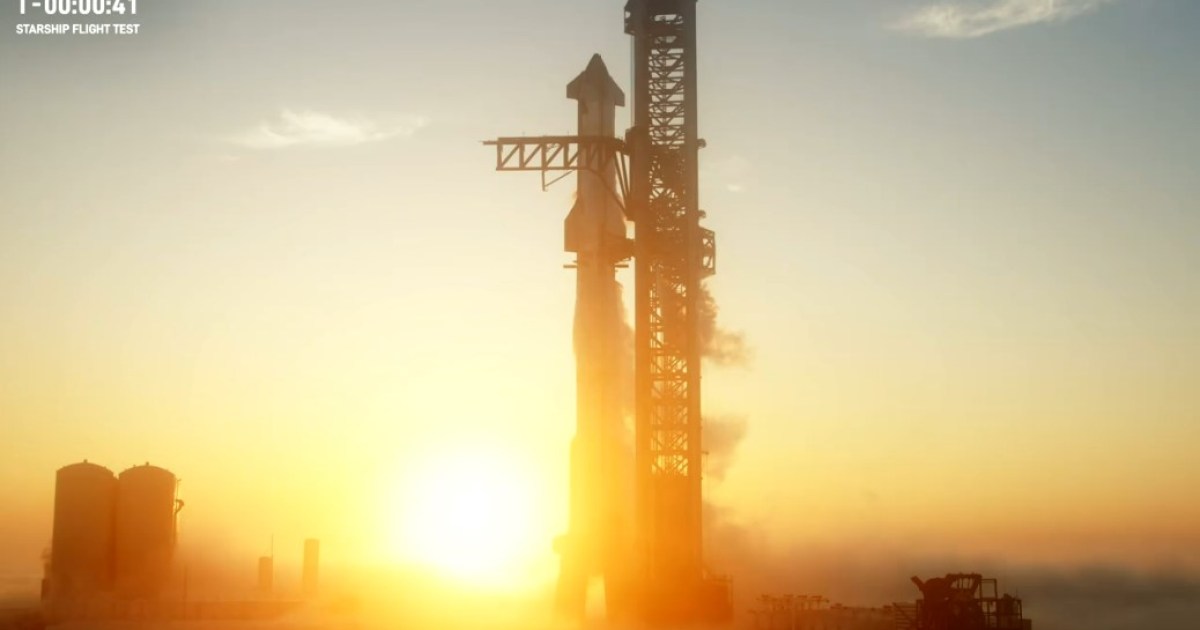The Federal Aviation Administration (FAA) has accomplished its investigation into SpaceX’s next Starship flight, which took spot in November final calendar year and finished with mid-flight explosions of the very first-stage Tremendous Large booster and the upper-stage Starship spacecraft.
The Elon Musk-led spaceflight company is now awaiting acceptance to launch the Starship — the most strong rocket at any time to fly — on its 3rd test flight, with the expectation that SpaceX could get the eco-friendly mild some time following month, with the rocket getting to the skies once more a limited while later.
Following November’s flight examination, SpaceX led the investigation attempts with oversight from the FAA and participation from NASA and the National Transportation Safety Board.
“SpaceX discovered, and the FAA accepts, the root will cause and 17 corrective steps documented in SpaceX’s mishap report,” the FAA mentioned in a statement unveiled on Monday. “Prior to the following launch, SpaceX must put into practice all corrective actions and acquire a license modification from the FAA that addresses all protection, environmental, and other applicable regulatory specifications.”
In a put up on its website on Monday, SpaceX shared some details relating to its investigation of November’s flight, noting that it was the initial Starship test to realize phase separation after April’s maiden exam flight failed just a several minutes just after liftoff.
“Following stage separation, Super Major initiated its boostback burn off, which sends instructions to 13 of the vehicle’s 33 Raptor engines to propel the rocket toward its meant landing site,” SpaceX stated. “During this burn off, a number of engines began shutting down prior to one engine unsuccessful energetically, speedily cascading to a immediate unscheduled disassembly (RUD) of the booster. The car or truck break up happened a lot more than 3-and-a-half minutes into the flight at an altitude of ~90 kilometers more than the Gulf of Mexico.”
SpaceX claimed the most possible root lead to for the booster RUD was “filter blockage in which liquid oxygen is supplied to the engines, foremost to a loss of inlet stress in engine oxidizer turbopumps that ultimately resulted in one engine failing in a way that resulted in reduction of the car or truck.”
It reported that to protect against this from occurring once more, it is manufactured hardware adjustments within the booster oxidizer tanks to boost propellant filtration capabilities and also refined operations to increase dependability.
In the exact same test flight, the Starship spacecraft continued on its journey till a leak of liquid oxygen propellant caused “a combustion party and subsequent fires that led to a decline of communication between the spacecraft’s flight pcs,” which resulted in the decline of the motor vehicle soon immediately after. SpaceX mentioned it has since made components alterations to increase leak reduction and fire safety.
“More Starships are ready to fly,” the company claimed as it awaits start authorization from the FAA.
SpaceX hopes to use its future-era heavy-elevate rocket for cargo and crew missions to the moon in the around foreseeable future, and, seeking additional ahead, for identical flights to Mars, as well.
Editors’ Tips



